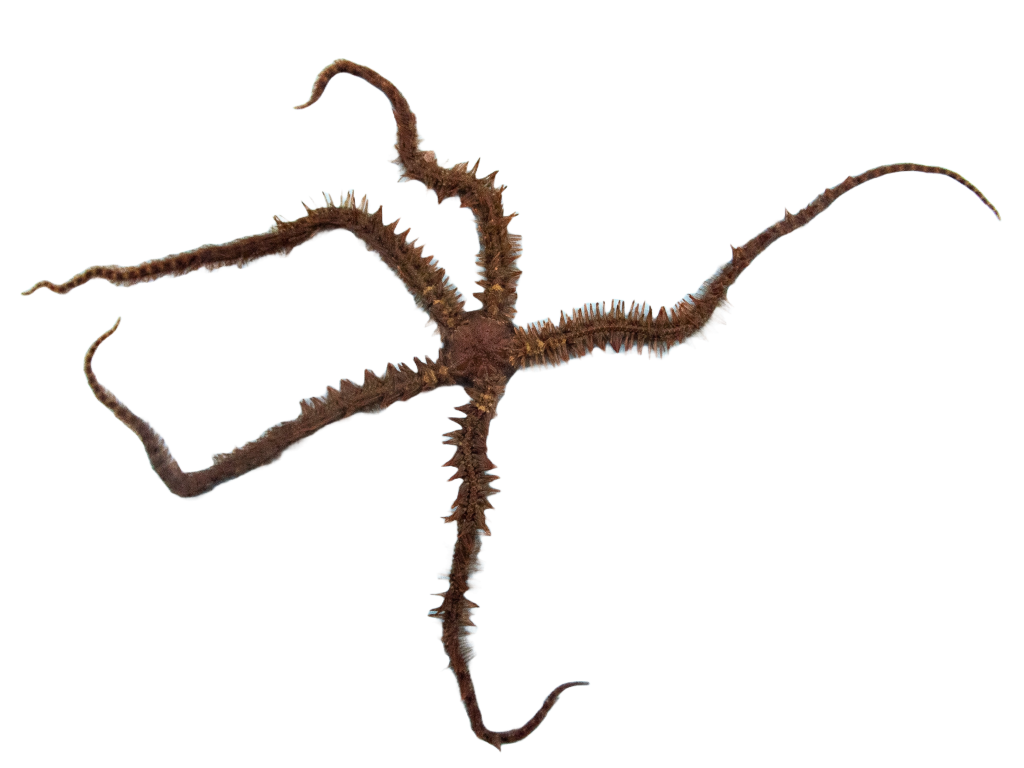Common Brittle Star
Ophiothrix fragilis

The young climb around on the adults
The common brittle star has long, fragile arms that break easily. In the wild, the vast majority of common brittle stars have at least one arm that is broken off. But the arms grow back. The common brittle star comes in many different colours, such as purple, blue, yellow, white and red, usually in a striped pattern.
The species lives in huge colonies, both with its own species and with its relative the black brittle star. They feed by catching plankton with their sticky tube feet on the underside of their bodies, and by chewing dead organic matter that has fallen to the bottom. The young of the common brittle star spend a while in the beginning of their lives, by climbing around on the backs of the adults. It helps them catch food until they are big enough to do it themselves.

Photo: Peter-Southwood-CC-BY-SA
Related to the more famous starfish
As echinoderms, brittle stars are related to the more familiar starfish, among others. There are about 2200 species of brittle star in the world and 20 or so species in the waters around Sweden. Brittle stars are one of the oldest groups of animals on Earth.
All brittle stars have a distinct round body disc with long, slender and spiny arms. The mouth is on the underside of the body, just like with starfish and sea urchins.

Photo: Frederic-Ducarme-CC-BY-SA
If a body part is lost, a new one grows
Like the starfish, the brittle star can repair itself if it loses a body part. If it loses an arm, it quickly grows a new one. If attacked by a predator, a brittle star can defend itself by breaking off an arm.
Common brittle stars live on the seabed, from shallow areas down to the greatest depths of the great oceans. They are nocturnal and can move very quickly by wriggling their flexible arms.
Distribution in Sweden
All along the west coast, down to Öresund.
White marking = Distribution

Threat based on the Red List

Trade regulations
CITES: Not listed.